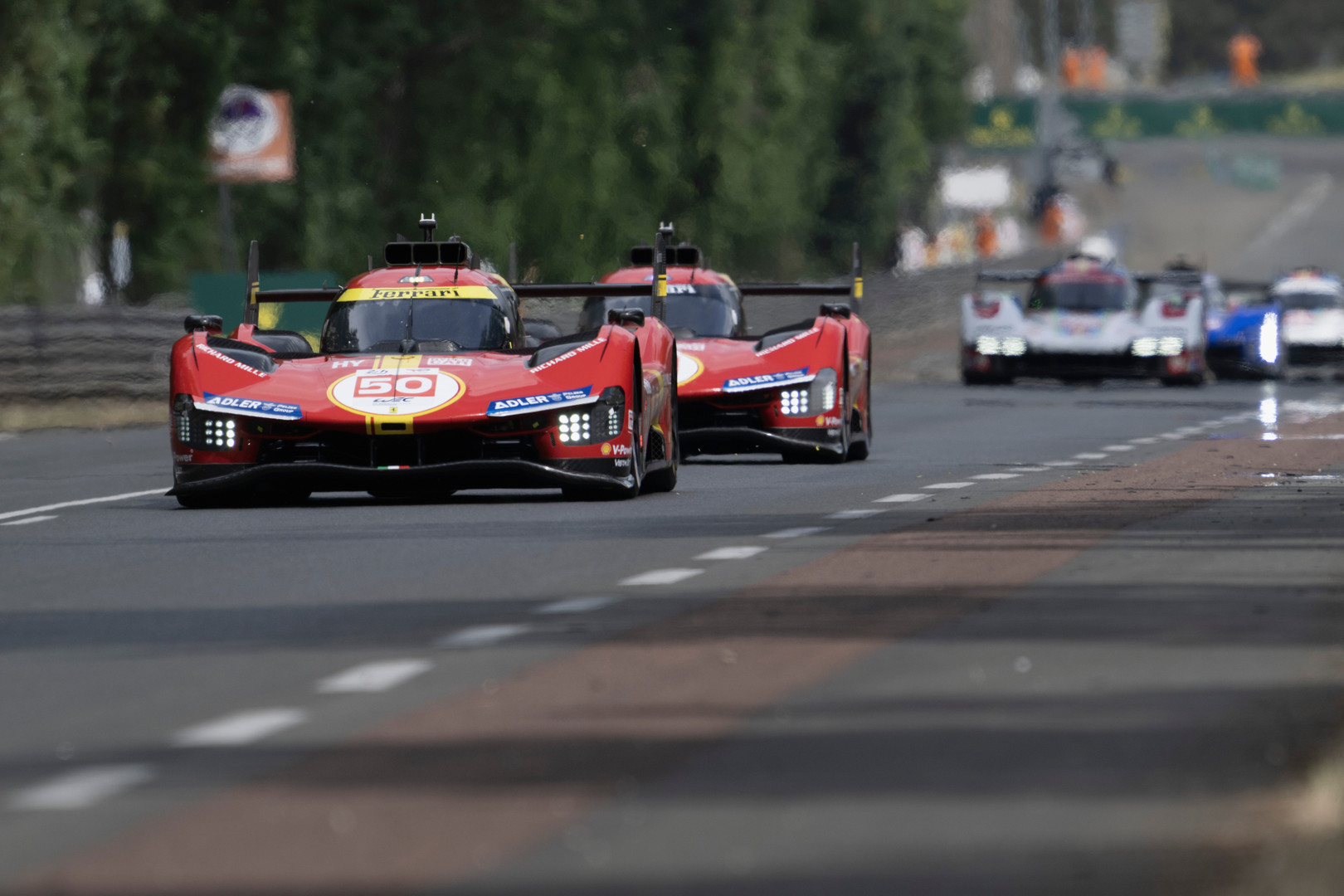BACKGROUND
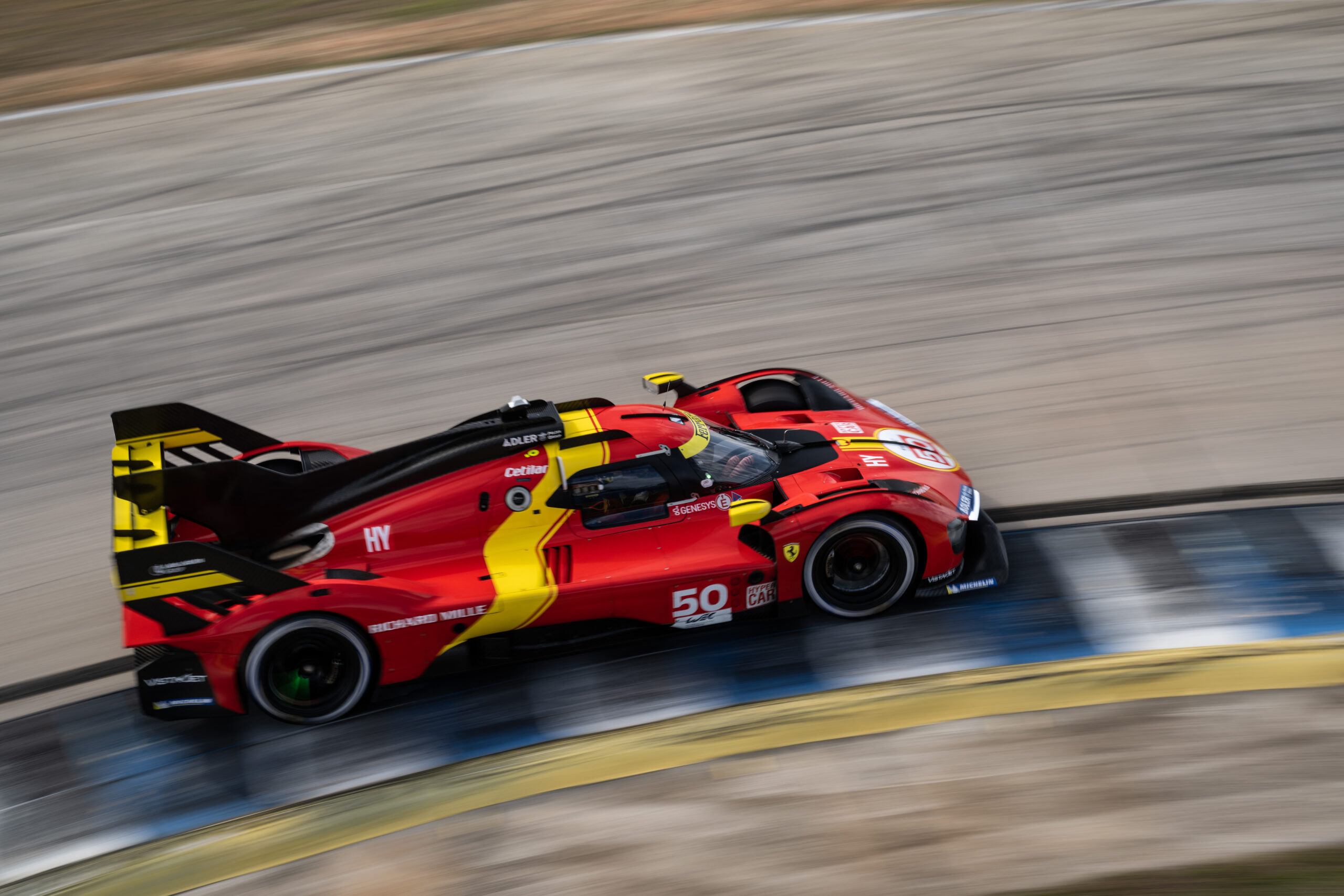
The new FIA (Fédération Internationale de l’Automobile) and ACO (Automobile Club de l’Ouest) technical regulations outlined for the Hypercar class in Endurance racing has led Ferrari to embark on producing a Le Mans Hypercar (LMH), faithful to its tradition, that sees the race track as the ideal terrain for developing cutting-edge technological solutions to be integrated onto its modern day road cars for sale. The Ferrari 499P is testament to Ferrari’s commitment to endurance racing from 2023.
Within the vehicle name, 499P, the letter ‘P’ denotes ‘Prototype’ and the 499 is the engine’s displacement. The distinct livery of the car made its debut at the Sebring 1000 miles race and was loosely based on the famous Ferrari 312P colour scheme from the 1970s era. The 499P that entered the 2023 Sebring race finished third in the Hypercar class with the AF Corse team where it completed 237 laps.
Incidentally, the two race car numbers for the 2023 Le Mans race were numbers ‘50’ and ‘51’ which relate to the 50 year period when Ferrari were so dominant with their prototype 312P.
The Ferrari 499P is a four-wheel drive car, which complies with the technical regulations of the hybrid engine Le Mans Hypercar class. Maximum power is 500kW to the wheels, with the electric motor fitted to the front axle, and the car only weights a mere 1,030 kilograms.
LE MANS HYPERCAR CATEGORY (LMH)
Please have a look at the full description of the Le Mans race car categories covering the Le Mans Hypercar (LMH), Le Mans Daytona Hybrid (LMDh), LMP2 & LMGTE. The purpose of the LMH category is to produce a top tier level of sports car racing where hybrid technology is deployed and manufacturers can mark their own individual design cues on their cars such as Ferrari with the 499P.
The LMH category is open to not only prototypes but also road car based vehicles with a combined power output of 671bhp and a minimum weight of 1030kg. If a manufacturer does decide to use Hybrid technology (which is optional) it can only contribute to no more than 286bhp and must be deployed on the front axle which means four wheel drive. However, it cannot be used at low speeds in order to prevent hybrid LMH cars having a distinct advantage out of slow corners in wet weather conditions.
Toyota, Peugeot and Ferrari were LMH cars in the Le Mans 2023 24 hour race and thus four wheel drive, however, the Glickenhaus and Vanwall cars are non-Hybrid and rear wheel drive.
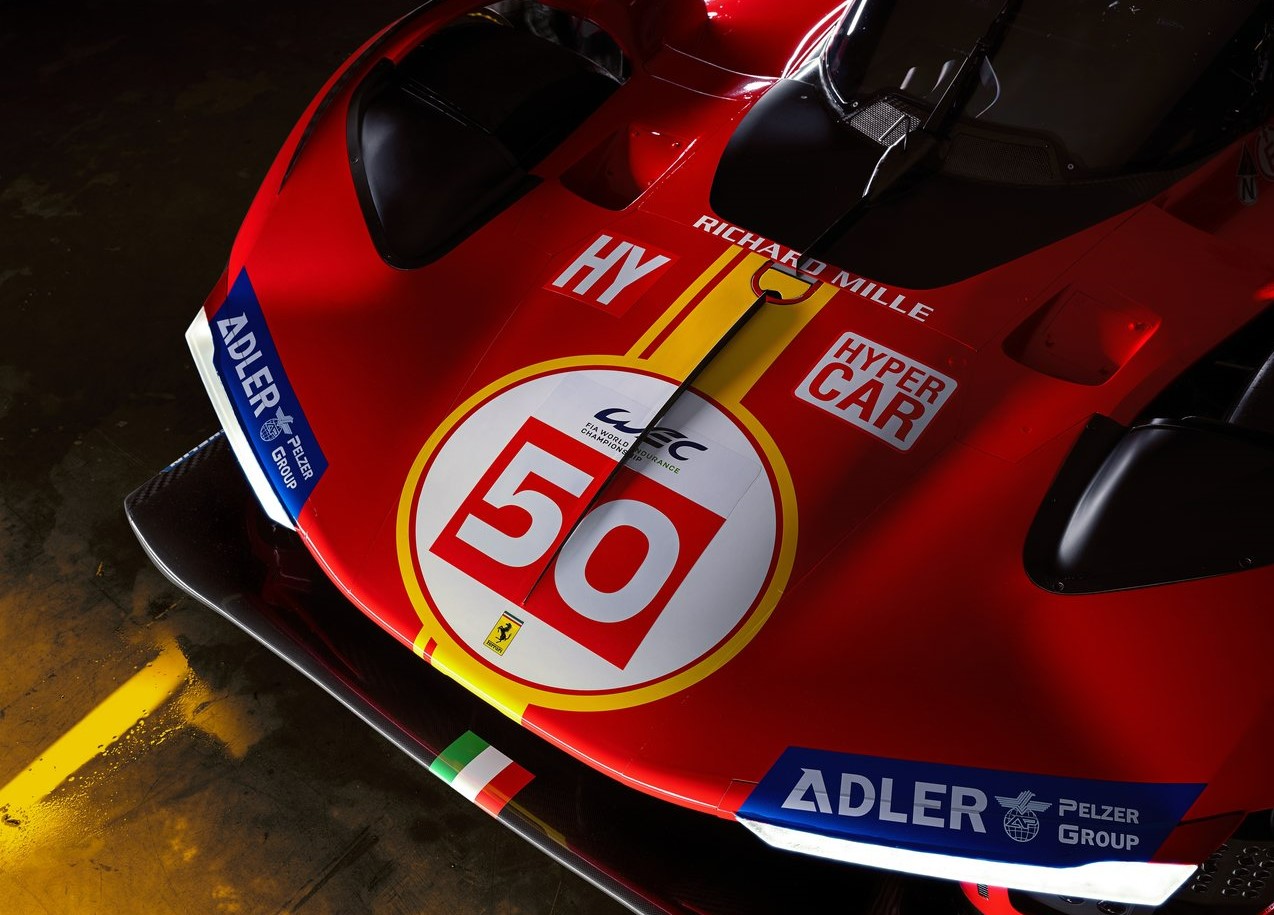
HYBRID POWER
The Ferrari 499P possesses a hybrid powertrain where the front axle is powered by an electric motor located in the mid-rear power unit. The internal combustion engine is limited (under regulation) to power the wheels with 500kW of power and is derived from the road going V6 twin-turbo family of cars. This engine shares the same architecture to the one fitted to the Ferrari 296 GT3 race car albeit with less weight.
One special feature of the longitudinally mounted V6 engine fitted to the 499P, is the fact that it is a load bearing engine which performs a key structural function compared to the other versions fitted to Ferrari GT cars where the engine is mounted to the car’s rear sub-chassis.
Ferrari have also developed an effective hybrid powertrain which boasts the ERS (Energy Recovery System) with a maximum power output of 200kW. The electric motor possesses a differential which driven by a battery that is recharged during braking and de-acceleration, therefore, no external power source is required.
The battery pack has a nominal voltage of 900v and was developed with Ferrari’s experience in Formula One although it was purpose built for the 499P project. The powertrain is mated with a Xtrac seven-speed sequential gearbox.
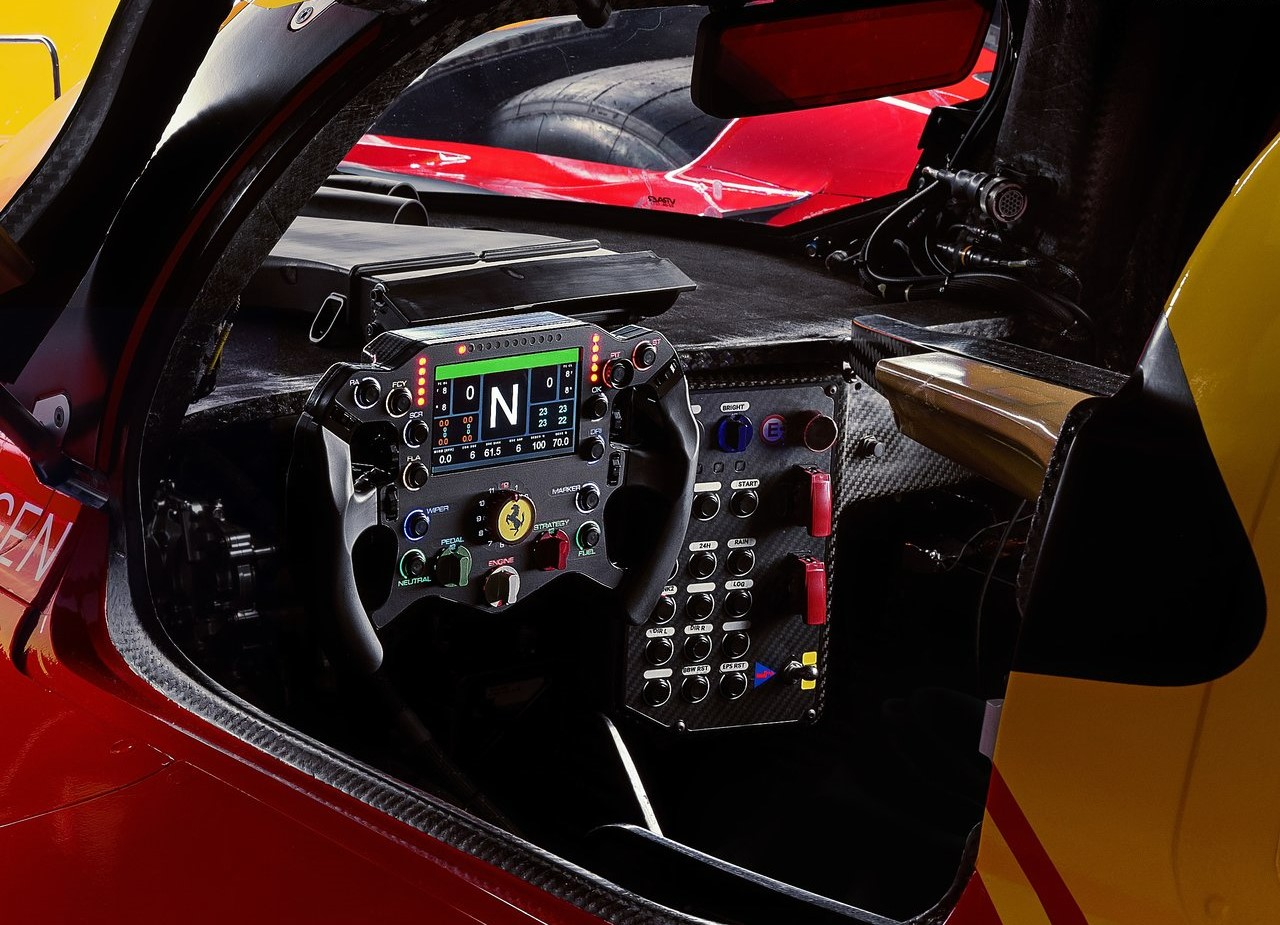
BOLD DESIGN CUES
The Ferrari Styling Centre (under the direction of Flavio Manzoni whose background is from leading the creation of the Ferrari F12 Berlinetta and LaFerrari road cars) was the support for the design of the 499P race car.
The car exudes a balance of flowing surfaces and tense lines which give it a futuristic look. Beneath the bodywork lies the radiators which are cooled by way of aerodynamic flows which pass through the side pods over the recesses between the main ridges surrounding the cockpit.
Large louvres exist on the surface area of the wheel arches which are a Ferrari hallmark, where their aim is to reduce the pressure inside the wheel housings. Along with the headlight clusters, there is a real sense of expressiveness which harks back to the styling traits first introduced on the Ferrari Dayton SP3
On the rear of the 499P, the wheels and suspension are visible due to the subtle carbon-fibre skin covering various aspects. The tail incorporates a double horizontal wing, whilst the main wing and upper flaps have been carefully designed to ensure the most effective downforce and performance are generated.
Above the car lies the multiple air intake feed which supports the V6 engine and also provided cooled air to the battery and gearbox.
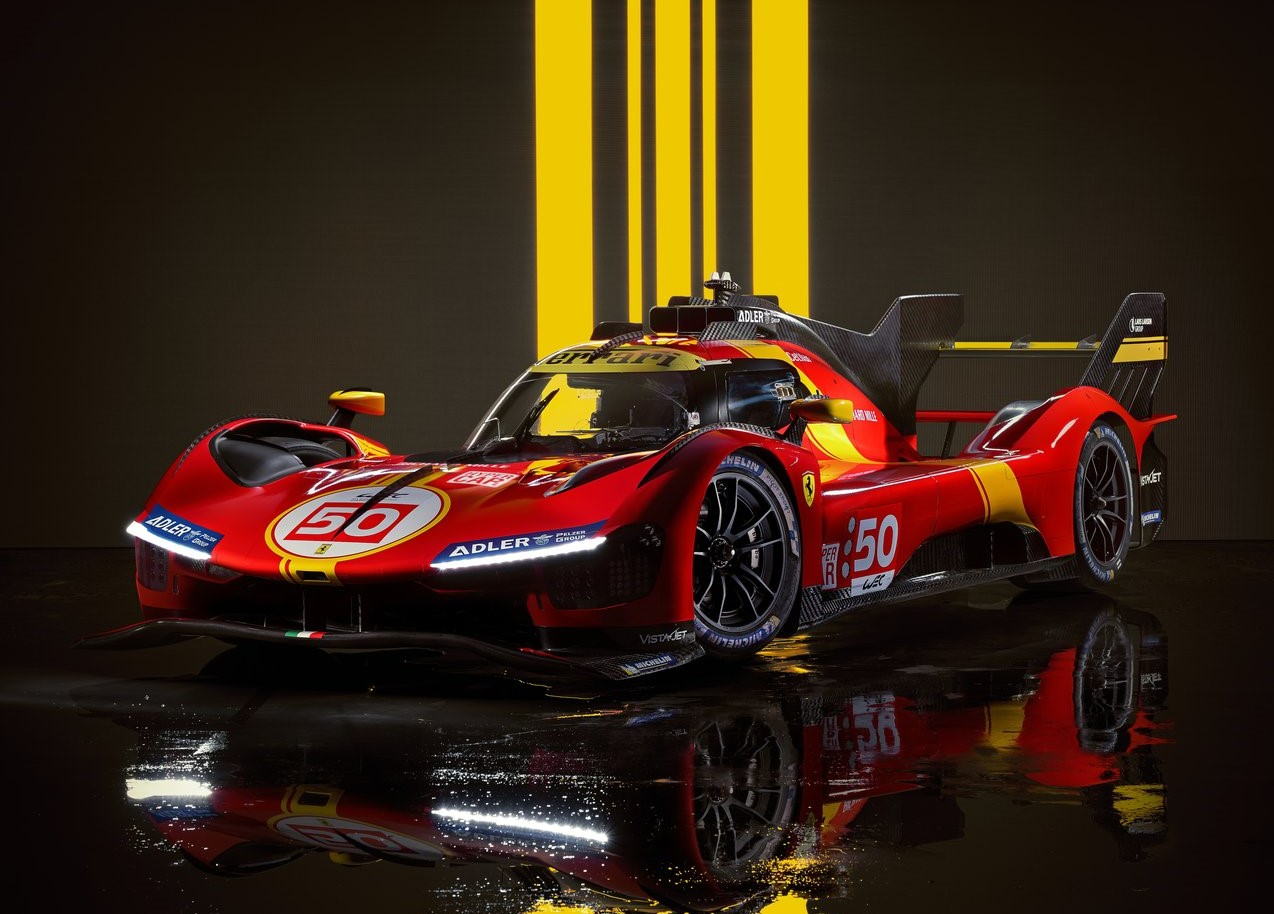
INNOVATION
The Ferrari 499P is built on an all-new carbon-fibre monocoque chassis which boasts cutting edge motor sport technology. The geometry of the double wishbone, push-rod-type suspension results in immense damping stiffness, the benefits of which are evident at both maximum velocity as well as vehicle cornering. The electronics systems are developed from the experience gained in the world of GT racing.
The cutting edge braking system integrates a brake-by-wire system necessary to allow the recovery of kinetic energy by the front electric axle under braking. The system has been developed to combine precision and speed of response with reliability and durability, complementary aspects that are one of the keys to success in endurance racing. The 499P electric front axle uses energy recovered while braking, storing it in the high-voltage battery before transmitting torque to the front wheels when a certain speed is achieved, thus helping boost the performance on any race track the Ferrari 499P is unleashed on.
With a massive amount of experience from its sportscar programme, Ferrari chose to work with Bosch on the vehicle and engine electronic systems rather than with Magnetti Marelli, which is a technical partner for the F1 campaign.
Please see further information and insight on the Ferrari 499P Hybrid powertrain and how the ERS and 4WD systems work.
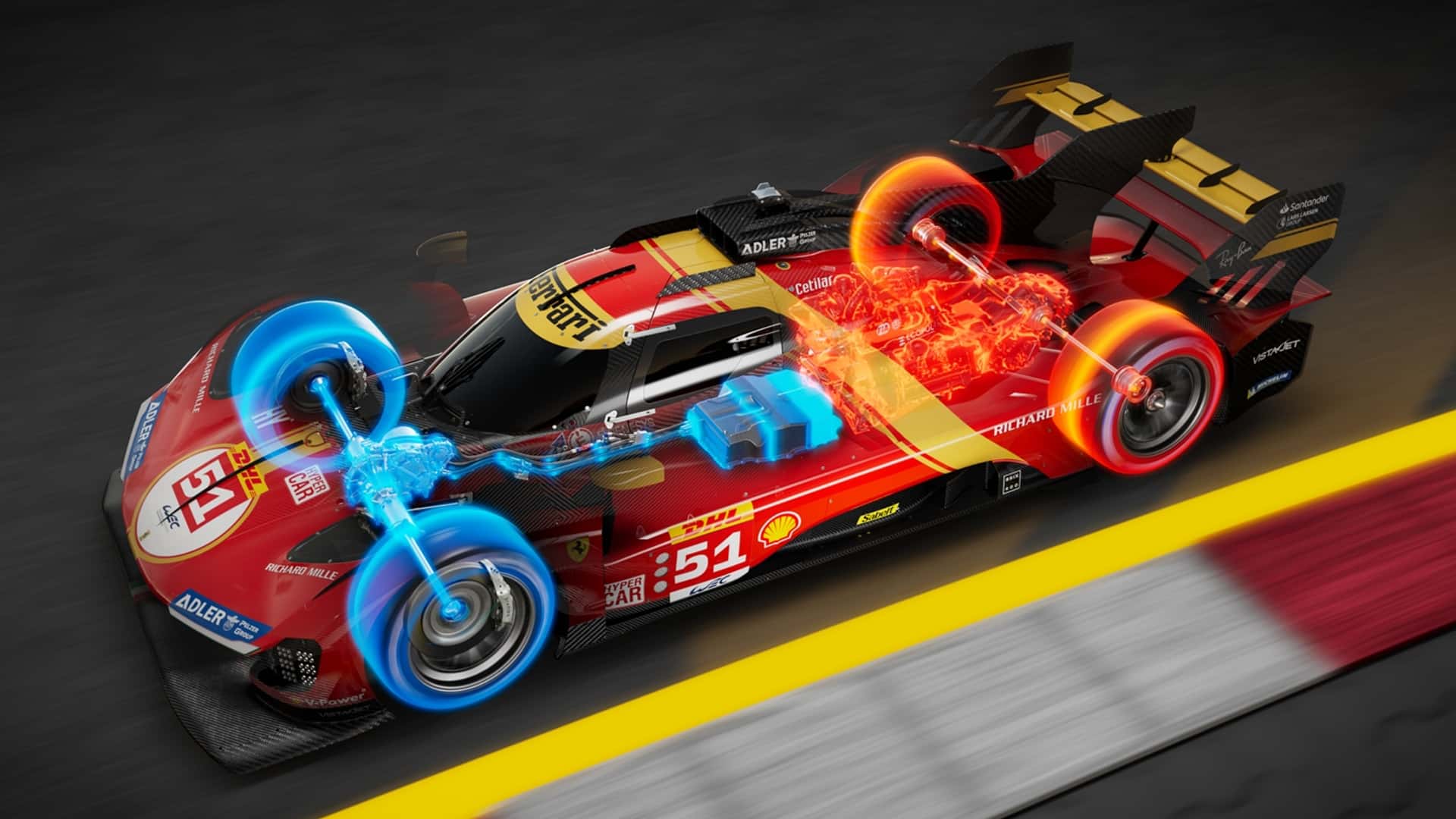
AF CORSE PARTNERSHIP
The Ferrari 499P will be managed on track by Maranello technicians and engineers with the collaboration of the AF Corse team. This valuable partnership continues the winning streak which began in the 2006 FIA GT with the F430 GT2 that secured Team, Driver and Constructor titles in its debut season. The vast majority of GT successes in recent years have been the result of the partnership between Ferrari and AF Corse, including all those achieved in the World Endurance Championship (WEC) since its inception in 2012.
Please read the success story of the AF Corse team during the Le Mans 2023 – 2024 hour race.
